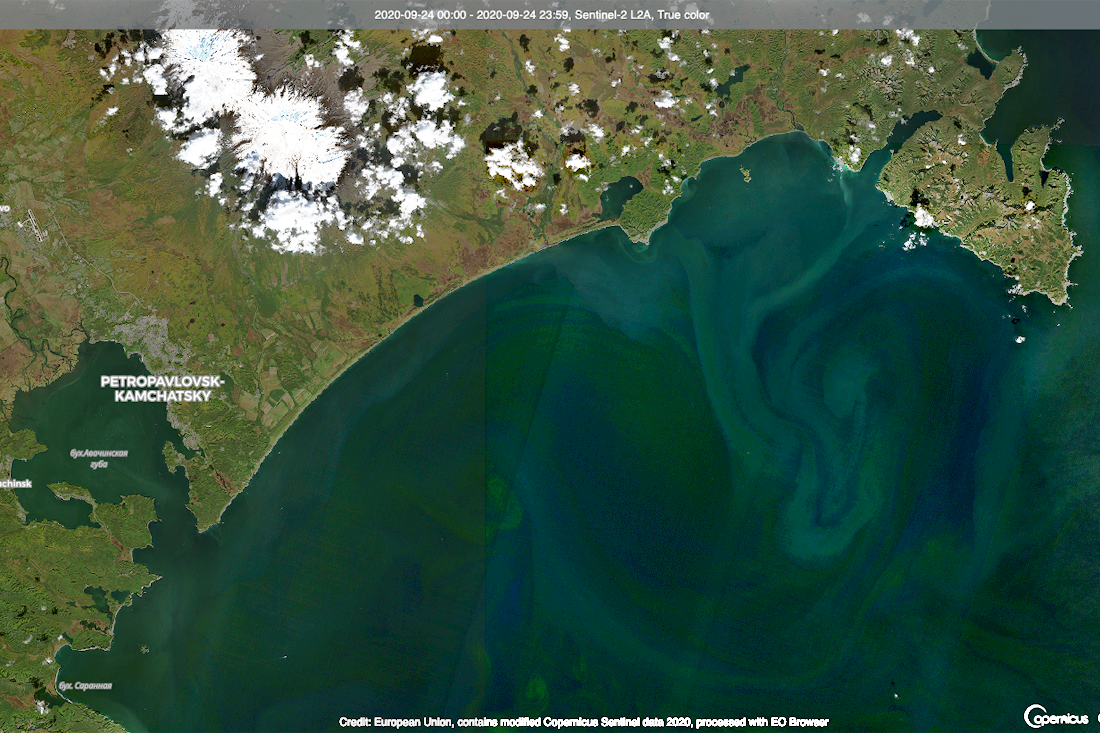
The situation with the poisoning of Khalaktyrsky beach and Avachinskaya bay in Kamchatka is becoming clear. After the commotion raised in social networks, all the services and scientists that they could came there, and conducted an endless number of analyzes. Operational information is posted on the official telegram channel . Until the end, all the reasons and factors have not been determined, but so far it is clear that no pesticides or rocket fuel have leaked from anywhere. And the reasons for the death of marine organisms are most likely natural. One leak of oil products on a passing ship was also seen, but it is unlikely that it was involved in the maritime genocide. And space provided invaluable assistance in this investigation.
The main reason for the death of marine animals in Avacha Bay, as well as other circumstances that alarmed the Internet, is the unicellular algae of dinoflagellates . It is they who are involved in toxic substances in ocean water, unpleasant odors, discoloration of the water, large spots on the surface visible from the air . This effect is known, and is called " red tide ", although the color of the "tide" is determined by the type of unicellular, and not only red, but also quite yellow-green, like this time, is possible.
Intensive growth of microalgae in September, with a growth peak at the end of the month, led to the poisoning of surfers and bottom dwellers. And at the end of September, a strong storm broke out off the coast of Kamchatka, it threw dead sea creatures ashore, which on October 2 was discovered by some Instagrammers. And so it began ...
The first tests carried out by the Ministry of Natural Resources of Kamchatka showed an increased content of oil products and phenol in the water. Greenpeace declared an environmental disaster, believing that something like the oil spill in Norilsk had happened. True, the suspicions of a leak of toxic rocket fuel from the military at the Radygino test site were not confirmed . We also checked the landfill of buried pesticides at the foot of the Kozelsky volcano, anddid not find significant leaks, although they noted that it was necessary to monitor it more closely.
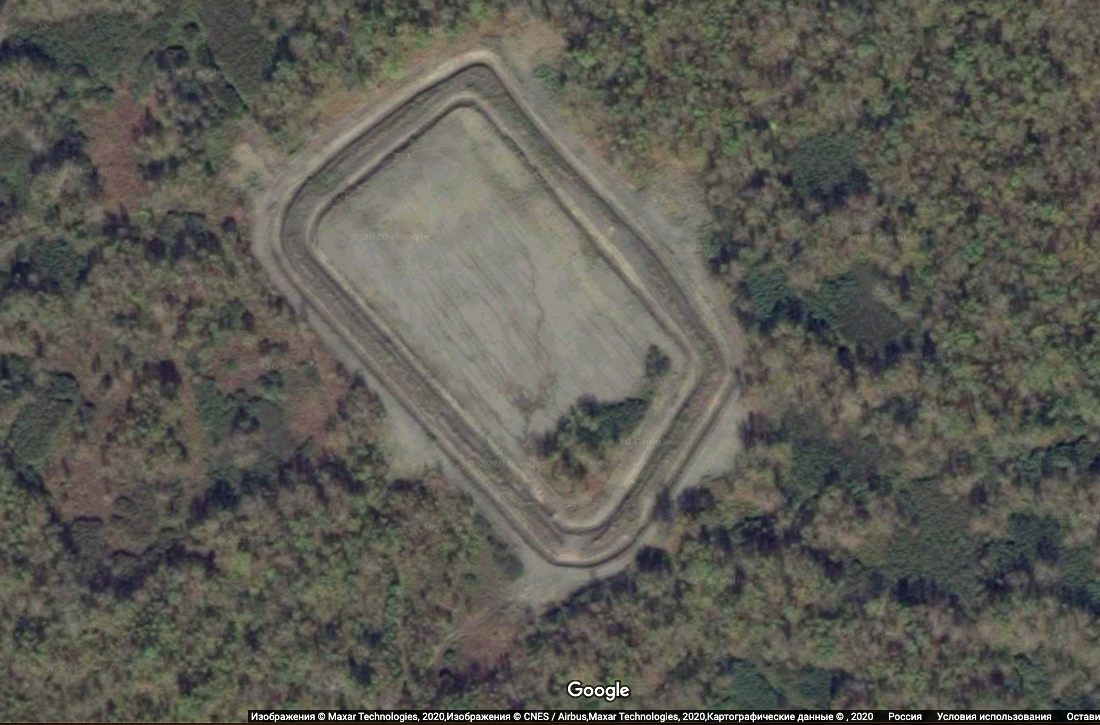
Subsequent analyzes in some places showed in sea and river water an excess of permissible norms for oil, phenols, phosphates, iron, but not in those concentrations that could lead to the extinction of bottom inhabitants.
But scientists from the Space Research Institute of the Russian Academy of Sciences were able to examine from space signs of the discharge of oil products (probably bilge water ) from one of the ships leaving Avachinskaya Bay on September 23.

The discharge was not large-scale, and after just a couple of days no signs of it were visible from space, but it explains the detected pollution in the analyzes of the water in the bay. However, in those vicinity geologists assume small deposits of hydrocarbons , so some oil could get into the water naturally.
IKI RAN could not determine what kind of ship it was, but the Investigative Committee opened a criminal case. I suspect that it was a Subaru refrigerator , at least it had just left the port a few hours before, but this is just a guess. This point could also be clarified with the help of space, namely, AIS monitoring systemswhich are used by some services like MarineTraffic, but there is paid access to historical data, which I do not have.
The poisoning of Avacha Bay was also suspected of the military, who held exercises in August , early and late September. But they disowned .
With reference to Greenpeace, a satellite image from September 9 of the mouth of the Nalycheva River north of Khalaktyrsky beach was distributed on social networks. It was assumed that this removal is a sign of pollution.

However, the river itself does not have any large structures or oil storage facilities that could contain significant amounts of oil products. But the very possibility of using space data attracted my attention, and now I will try to reconstruct the course of events, as seen from space.
The Nalycheva River quite often discharges noticeable into the bay. For example, in 2020, this happened in June, July, August and September. Apparently, this happens after each sufficiently heavy rain in its upper reaches and does not lead to noticeable changes in the state of the water on the coast.

This summer was a record warm for the entire globe, especially the Arctic, although Kamchatka did not really get it this time, so there is not enough reason to directly suspect the involvement of global warming in this effect.
"Red tides" in Kamchatka have occurred before , including causing the death of marine life , but then they did not lead to such a public outcry. For comparison with recent events, we can watch from space how the 2017 “red tide” developed in Olyutorsky Bay in northeastern Kamchatka:
Olyutorsky Bay, July-August 2017
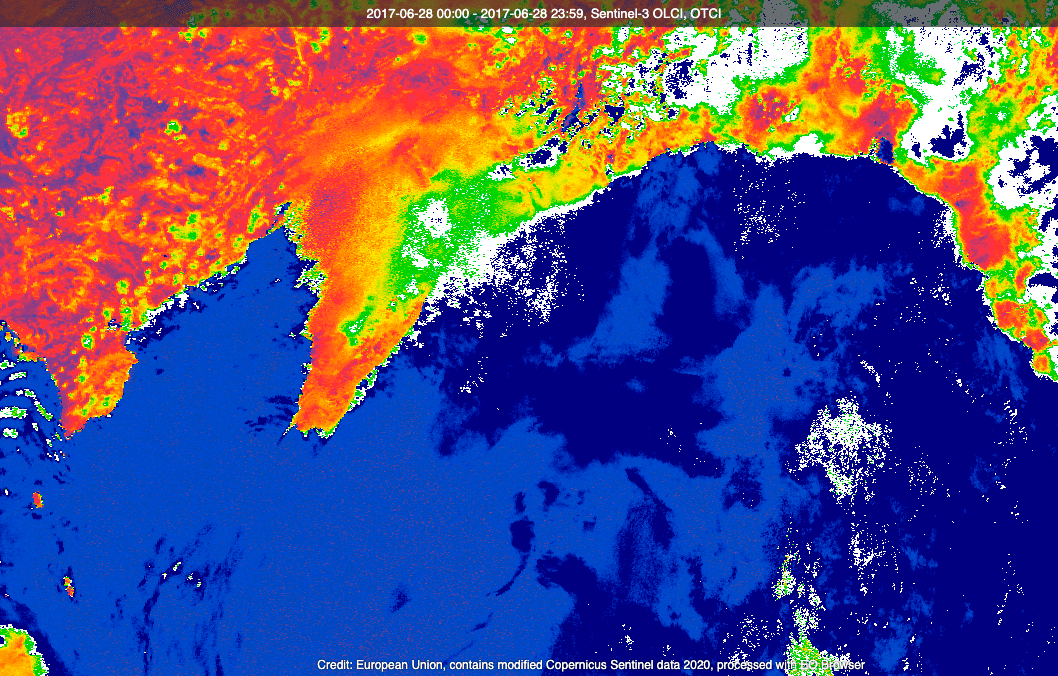

In this case, these are not satellite images, but already processed data that allow determining the intensity of living greens, due to the ability of chlorophyll to reflect well near infrared light and absorb visible light. It uses a popular among European scientists algorithm for determining chlorophyll by the position of the red edge of the reflected light spectrum. The clouds introduce some distortion in the data, but you can see how bright colors appear in the sea, which shows the increased concentration of chlorophyll at the surface of the water.
We see how the concentration of chlorophyll in the water sharply increases for one month off the coast of Kamchatka in one bay, and then it also disappears. This event led to a local pest of pink salmon. The danger of such a "red tide" is determined by the life cycle of microalgae: first they "bloom", releasing toxins in the process of their vital activity, and after extracting all nutrients from the water they die off, and oxygen dissolved in the water goes to oxidize all this organic matter. Those. microbes do a double blow - first poisoning and then strangling ocean neighbors.
Apparently, a similar process took place in September 2020 in Avacha Bay. According to vacationing surfers, in the middle of the month the water smelled unusual and unpleasant, and bathing led to a slight burn of mucous membranes. Although, according to doctors, only 11 people with minor injuries applied for medical help, which does not match the scale of the disaster. But in the middle of the month, no noticeable increase in unicellular organisms was still visible from space, but everything changed after a storm in late September. The ocean “bloomed”, as in the Olyutorsky Bay three years earlier, then everything disappeared just as quickly.
Avacha Bay, September-October 2020
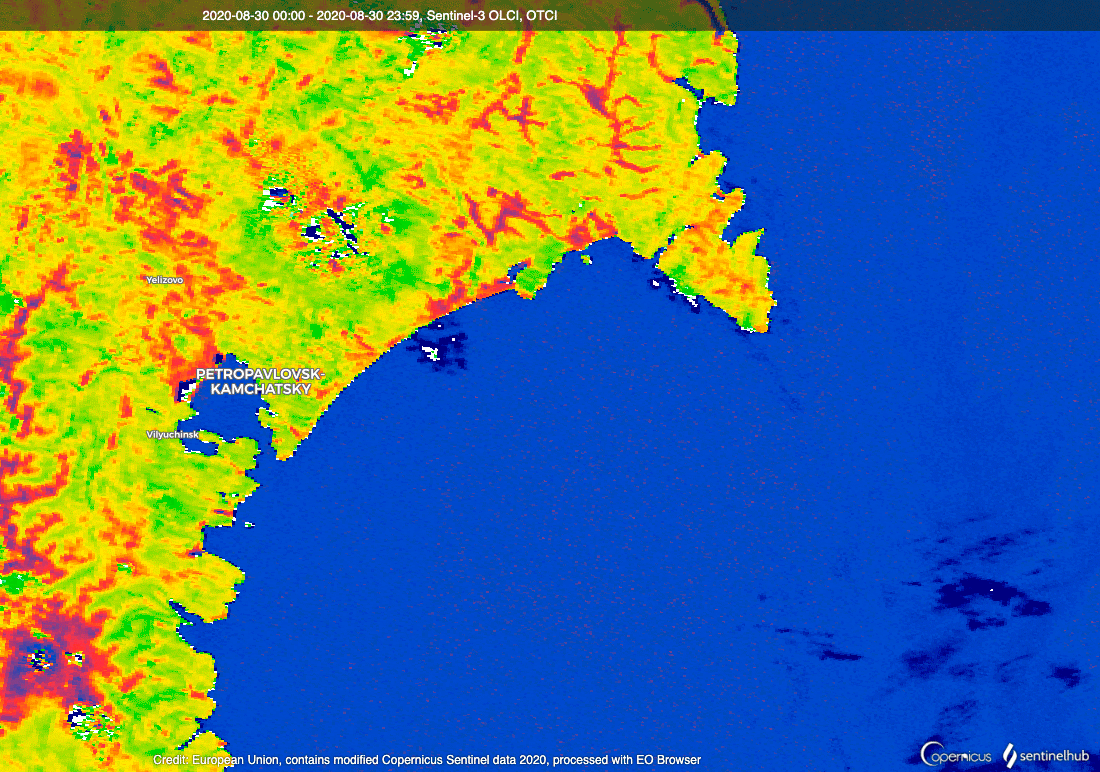

The wide geography of the distribution of algae shows that this process is not tied to any objects of human activity on the coast, neither to Petropavlovsk-Kamchatsky, nor to its few agricultural lands, nor to the Nalycheva River.
But the radar data of the Sentinel 1 satellite show a large-scale discharge of water on September 30 from coastal rivers. I suppose that this water contained a lot of organic matter from rotting fall foliage, which provided a serious nourishment for the unicellular algae, which intensified growth.
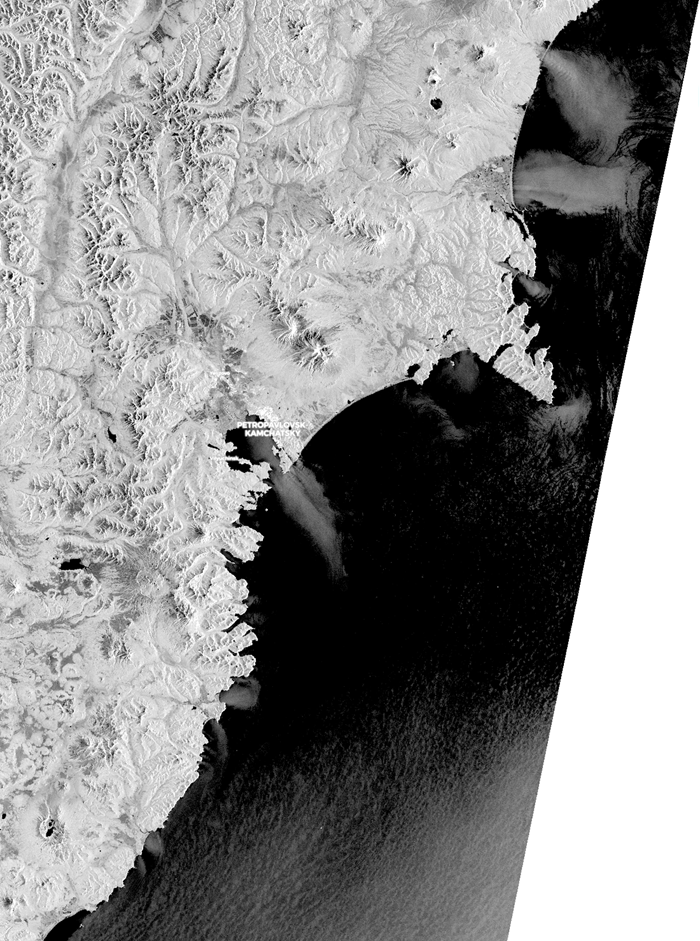
Although, it may just be that the storm raised the accumulations of algae from the depths.
The radar image from September 23 aroused interest as well. An unusual spot visible near Khalaktyrsky beach (on the right side of the image) has not been explained. Such a bright reflection could not create an oil slick, and the radar does not catch algae either. It could be a debris accumulation or some local disturbance of the water surface (for example, a drifting aircraft carrier).

In the following days, no trace of this stain remained. But it distracted attention from a thin dark strip, which IKI experts identified as the discharge of oil products from a ship.
The storm ended on October 2, when in some parts of the coast, sea animals began to be met. Also, a large population of Instagrammers with surfers got out into the open air and a virtual panic began. It was fueled by the audience's critical mistrust of any official information and fears that officials would try to hide and silence everything.
Despite the fact that there is no reason for this panic, its results can be assessed as quite positive. For example, the local authorities took care ofthe state of landfills with toxic substances that are still stored in Kamchatka. Many scientists have received interesting business trips and are doing field research in the scenic area. The Kamchatka authorities started talking about a broader application of space data in monitoring the ecology of Kamchatka and creating a system designed for this. All of Russia remembered that it has such a place as Kamchatka, which, I hope, contributes to the development of its tourism.
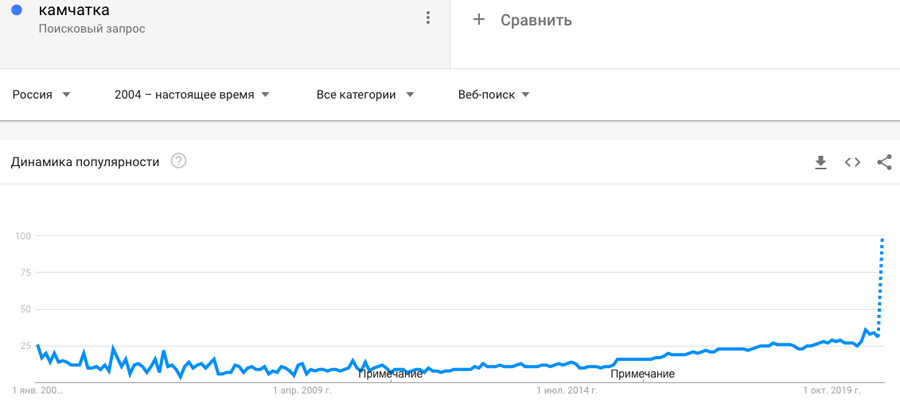
In general, it is worth noting that the Kamchatka government perfectly worked out the situation when a disaster develops only on the Internet, but society requires a response in the real world.
Depressing in this whole story is only one thing, that all the space data used by Greenpeace, scientists from KamchatNIRO, FEFU, IKI RAS andbloggers - from the European series of satellites Sentinel. Roscosmos also filmed the Khalaktyrsky beach, but it did not provide any additional information. Roshydromet itself monitors Kamchatka using open data from American and European satellites. The Europeans turned out not only to have more efficient satellites, but also a relatively convenient, and, most importantly, a service for accessing space data, open without registration and SMS: Sentinel Hub . Our "Resources", "Canopuses" and "Meteors" were not useful at the very moment when space could give the fastest answer about the causes of the incident. That, however, does not prevent their developers from declaring that our satellites " in some way " have no analogues.
PS Access toFTP-archive "Electro-L" was generally closed, although here it would not help us.